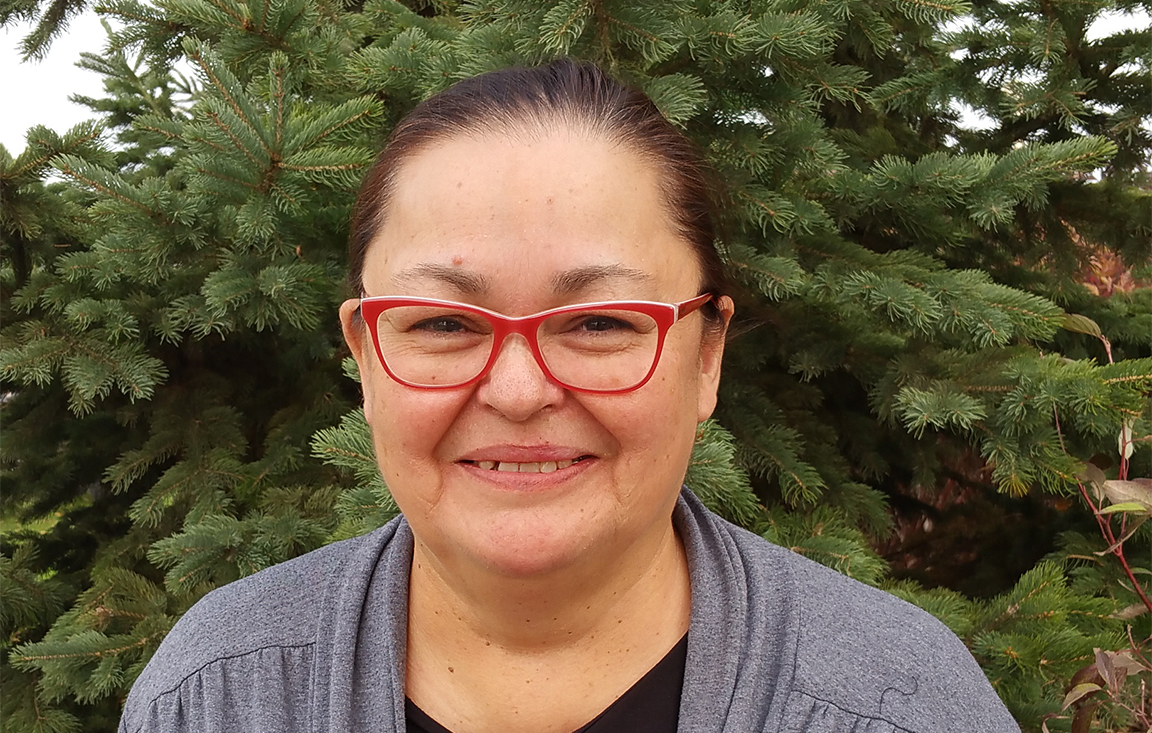
Victoria E. McIntosh is an Anishinaabe art educator, with a focus on "healing through the arts."
Teaching the next generation
Victoria E. McIntosh never thought she’d end up in university, especially in the Faculty of Education. This was due in part to her experience in Residential Schools, where she struggled with the trauma of her experiences.
“When I was in [the Residential School], I saw some pretty horrid things that these so-called caregivers and mother figures and father figures, what they did to us to separate us and keep us fighting,” says McIntosh. “I went through that. Always having to fight.”
Being creative with visual arts from an early age helped McIntosh from the trauma of abuse at the school, and it’s an aspect of her life that she continues to hold very dear.
“I always felt that deep down inside there was a part that I needed to always protect, and nobody was going to go near that or destroy that,” she says.
McIntosh parlayed her passion for the visual arts into a teaching position, where she she served as an Aboriginal liaison as well as an art educator through the St. James-Assiniboia School Division. It was here that she used her artistic gifts to teach younger generations about Indigenous culture, as well as “bring teachings and culture alive through storytelling in a visual format.” She also earned an award in Spirituality and Cultural Education through the Aboriginal Circle of Educators for her work.
McIntosh was profoundly affected by her experiences in the public school system. In one situation, an Anishinaabe boy came up to her to ask if she was the one teaching about cultural traditions.
“[The boy] said ‘good, it’s about time they brought a teacher in here.’ As soon as he said that, I thought, oh, it’s the young people that teach you. He’s looking at me like that, I thought, I need to get back to school. I need to get that piece of paper that says you’re an educator,” McIntosh says.
In 2010, McIntosh began her journey at the University of Manitoba, enrolling in the Aboriginal Wellness Program. The two-year diploma program incorporates knowledge of “western” concepts and traditional philosophies and knowledge systems of Indigenous people as they relate to mental health and wellness.
“The very first day of university was one of the scariest. I was terrified,” she says. “But seeing the other Anishinaabe in that room, we were all wanting the same thing. We wanted that education that was cheated from us in Residential Schools. It was hard, but I managed to finish the program and graduate.”
McIntosh is now pursuing her goal of becoming an educator. She’s currently enrolled in the Faculty of Education and is set to graduate in 2019 at age 60. Her long-term goal is to teach Anishinaabe traditions to the younger generations through visual arts.
“I see a lot of our young Anishinaabe people – Cree, Dene, all the different groups – and I’m looking at them, and I could just see them hungry,” she says.
“I think [incorporating Indigenous teachings in the school system] is so crucial right now. And teaching the language, because a lot of us, our kids don’t know the language, but want to learn it. I just want to be there for them, because these young people are giving me back something that was taken away from me when I was in Residential Schools.”






